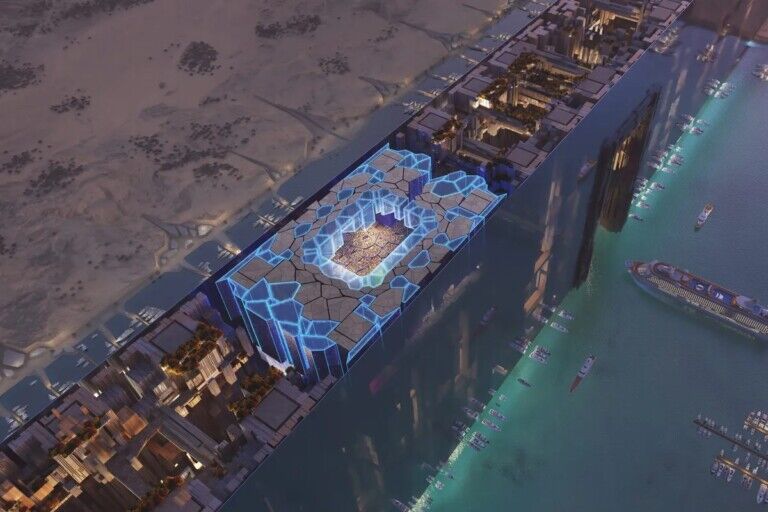Neom climate advisor Donald Wuebbles has warned that the $500 billion futuristic city in Saudi Arabia could alter the local environment and weather systems.
Wuebbles is a University of Illinois professor of atmospheric science who serves as a paid adviser to Neom. He is also an author of the Intergovernmental Panel on Climate Change’s reports.
He told the Financial Times he has raised the question of how the giga-project, including The Line, could start affecting the environment and weather.
The Line at Neom is a 170km construction project to create a zero-carbon city with “vertically layered” buildings for work, living and leisure.
“Part of my concern was, what impact is The Line and those [projects] going to have on the local environment… you start affecting the local weather and climate,” Wuebbles told the FT.
Issues could include changes to rain patterns and increased wind and storms in the desert area.
Other problems raised included emissions from the project’s use of cement and a slow move away from combustion engine construction vehicles and machinery, Wuebbles said.
Neom raises environmental concerns
Neom’s sustainability advisory committee was told that the environmental concerns were now a “higher priority”, Webbles said.
He also said Neom had commissioned academics to examine his concerns, but he has not seen their findings.
A representative at Neom told the FT that the development aimed to have a lower environmental impact “compared to traditional construction projects”.
Nonetheless, Wuebbles said he was impressed with Neom’s use of technology.
“They’re trying to do something like a moonshot: nothing like this has been done before, and there’s so much that could be learned.”
Neom’s first destination, a luxury resort named Sindalah, opened in October.
Last year, Neom appointed a design team to lead the architecture and engineering for the first phase of The Line, later revealed to be the Hidden Marina.
Highlights at Neom include Trojena, a mountain resort with a ski village, ski slope, wellness resorts and a nature reserve, and Oxagon, an octagonal floating port city.
Images courtesy of Neom
